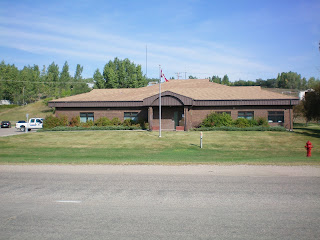 Board-and-batten, which originated in Norway and Sweden, describes a type of siding that has alternating wide boards and narrow wooden strips, called battens. The boards are usually about one foot wide but this varies somewhat. The boards may be placed horizontally or vertically. The battens tend to be about 1/2 inch wide. These battens are placed over the seams between the boards. The same finish is also used in interior design. Reverse board-and-batten has very narrow boards with wide battens installed over the seams.
Board-and-batten, which originated in Norway and Sweden, describes a type of siding that has alternating wide boards and narrow wooden strips, called battens. The boards are usually about one foot wide but this varies somewhat. The boards may be placed horizontally or vertically. The battens tend to be about 1/2 inch wide. These battens are placed over the seams between the boards. The same finish is also used in interior design. Reverse board-and-batten has very narrow boards with wide battens installed over the seams. Shiplap is a type of siding technique in which wooden boards are rabbeted or joined so that the edge of one board overlaps the one next to it in a flush joint. Pine is the most commonly used wood for this type of siding and it is usually rough-sawn or rough cut (unfinished).
Shiplap is a type of siding technique in which wooden boards are rabbeted or joined so that the edge of one board overlaps the one next to it in a flush joint. Pine is the most commonly used wood for this type of siding and it is usually rough-sawn or rough cut (unfinished).Shiplap siding forms a relatively tight seal and is usually used as a siding for buildings that do not require extensive maintenance but must withstand cold and aggressive climates. It is popular for its clean look and because it is easy to install with little material wastage.
As with board-and-batten, shiplap is also used indoors for the rough or rustic look that it creates when used as paneling or for ceilings.
Some of the first homes built in northern Saskatchewan were of log cabin construction, also known as frontier construction. The design originated in Sweden and contained only one room which was about 10 feet wide and measured between 12 and 20 feet long; had at least one glass window; included a loft area for sleeping; and used no nails.
Today, log homes are desired for their look more than economics. There are two main types of construction: handcrafted in which the home is typically made of logs that have been peeled but are otherwise essentially unchanged from their original natural appearance when they were trees; and milled or machine-profiled in which the home is constructed of logs that have run through a manufacturing process which ensures timbers that are consistent in size and appearance.
There are several methods of assembling the logs in this type of construction. The scandinavian full-scribe, or chinkless method, utilizes naturally-shaped, smoothly peeled logs that are custom-fitted to one another. They are notched where they overlap at the corners.
In the flat-on-flat method logs are flattened on top and bottom and then stacked, usually with butt-and-pass corners. Milled log homes are often constructed using a tongue and groove system that helps to align one log to another as well as create a system for sealing out the elements.
With tight-pinned butt and pass method the logs are not notched or milled in any way. They are in a single course and do not overlap, and vertical pairs of logs are fastened with tight, load-bearing, steel pins.





























